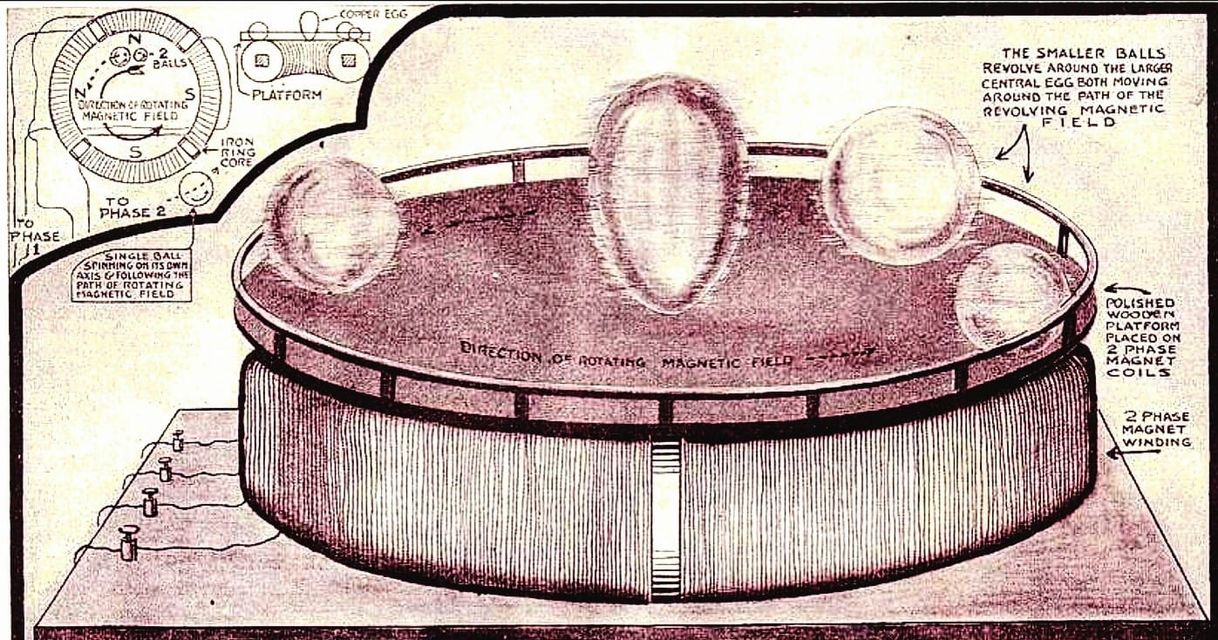

Nikola Tesla’s Egg of Columbus
By J.J.J.
The “Egg of Columbus”is a hearsay story originating in the 16th century about the infamous Christopher Columbus and his nautical explorations into the New World. As to be expected, Columbus was met with several doubters who did not believe he would find a new trade route, despite his convincing propositions. In order to stand his ground, Columbus challenged these critics with a tactical game of sorts: if these naysayers could stand an egg upright with no outside assistance, then Columbus would agree with their claims that no new trade routes existed. After many attempts, the challengers eventually gave up. Columbus then grabbed the egg and very lightly cracked the tip of the egg and it miraculously stood independently. With this trick, Columbus was subsequently allowed to meet the queen, who thus pawned her jewels and funded his expedition. This story originated in Italy, but is a prime example of an early American folk story of motivation and inspiration, conveying that, although things seem impossible at first, anything is possible with the right skill.
In the late 1880s, Nikola Tesla, who was in dire need of funds at the time to continue to foster his scientific research and experiments, found himself in a similar situation as Columbus. Specifically on one occasion, he was at dinner with wealthy capitalists who were skeptical of his various technical propositions. Tesla’s induction motor was such a new concept that it was difficult to comprehend by the layperson, and thus challenging to obtain support by the general public. Alternating current (AC) power was not a new concept at the time; however, Tesla had discovered the “rotating magnetic field” which made AC motors significantly more efficient and was an entirely new product of commercial value. To gain these wealthy investor’s trust, Nikola Tesla asked them if they were aware of the story of “The Egg of Columbus.”
“Of course!” they remarked.
With confidence in his stature, Tesla replied, “Well, if I could outdo Columbus and stand an egg up without cracking the egg, would you give me a chance?”
“We do not have the fortune of a queen, but if you could entertain us with this we would absolutely put our investments in you.”
Tesla then invited them back to his laboratory the next day and had his equipment already configured and eagerly prepared to prove the challenge at hand. He had his new induction motor ready to execute with a wooden table set directly above it, and there was a huge copper egg in the center of the table. The men enthusiastically approached the table and Tesla confidently powered up the induction motor. Slowly, the egg began to rotate, then wobble, and as the motor sped up, the egg began to rotate perfectly on its tip. The investors laughed joyously and hugged in collective amazement.
“You have done it, Mr. Tesla!” they screamed. “We will gladly invest in your motor!”
Later in 1893, Nikola Tesla would display this motor and showcase this same experiment years later at the Chicago’s World Fair. Tesla’s “Egg of Columbus” was a visitor’s favorite. Not only would he rotate one copper egg in the magnetic field, but he would also set in motion multiple eggs of different proportions in rotations; the smaller eggs would rotate and circle around the bigger egg reminiscent of a mini solar system. This was in part how he developed his dynamic theory of gravity, a theory he would spend the rest of his life cultivating.
In 1896, Tesla’s AC system of power was put to use and powered Buffalo, NY from Niagara Falls. Today we still use Tesla’s basic system of power transmission. [Dr. Nikola Tesla]
